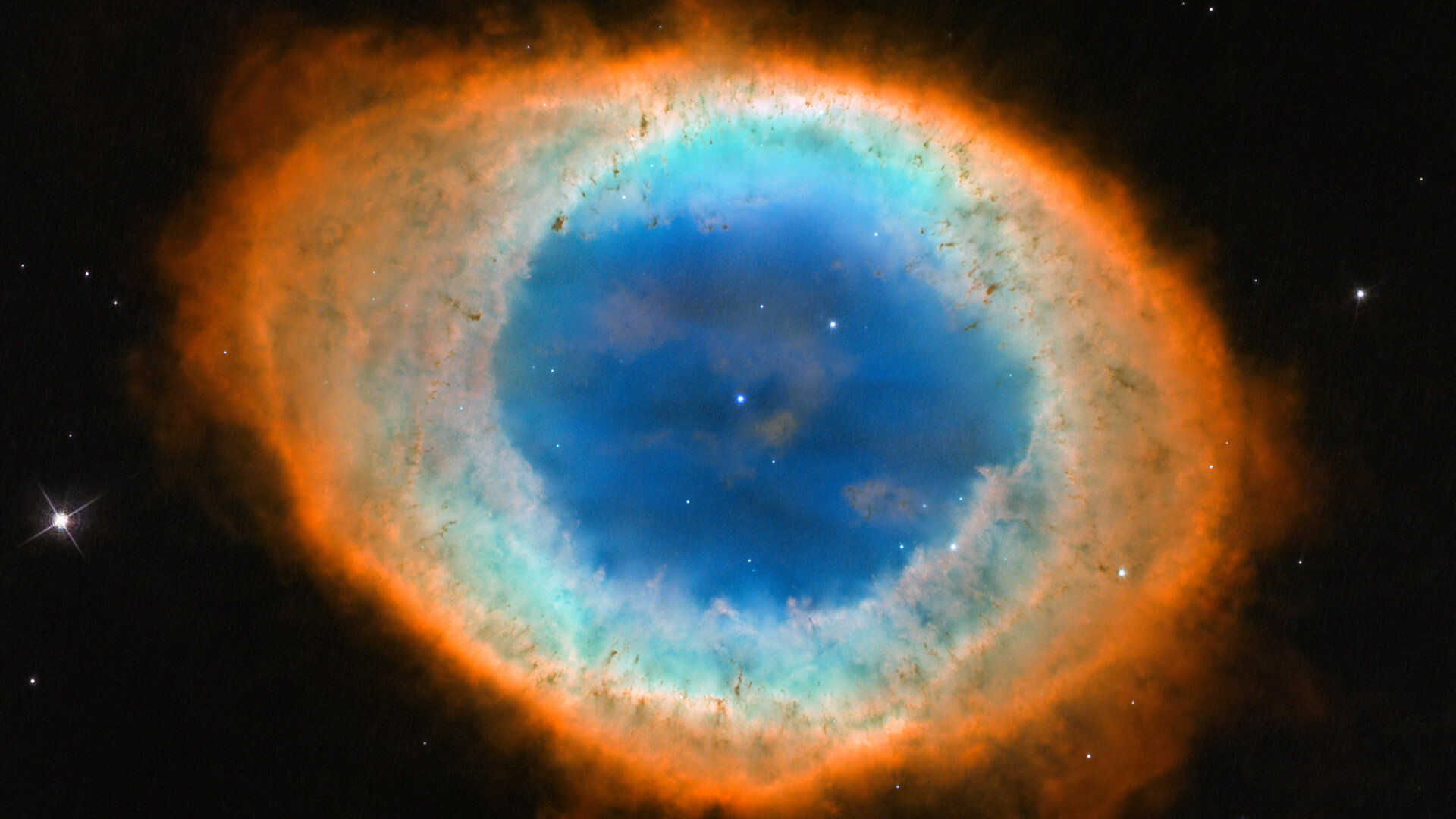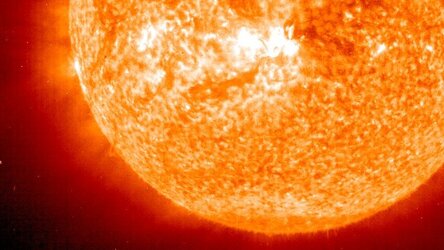New view of the Ring Nebula
The Hubble Space Telescope has produced the most detailed observations ever of the Ring Nebula.
This image reveals intricate structure only hinted at in previous observations and has allowed scientists to construct a model of the nebula in 3D showing the true shape of this striking object.
Formed by a star throwing off its outer layers as it runs out of fuel, the Ring Nebula is an archetypal planetary nebula. Despite the name, the phenomenon has nothing to do with planets – they take their title from their fuzzy circular appearance as seen through low-magnification telescopes.
The Ring Nebula, also known as Messier 57 or NGC 6720, was discovered in 1779 by astronomer Antoine Darquier de Pellepoix, and observed shortly after by Charles Messier, becoming the 57th object in the famous Messier catalogue of astronomical objects.
It lies just over 2000 light-years from Earth and has a roughly elliptical appearance.
Astronomers have combined ground-based data with new observations using the NASA/ESA Hubble Space Telescope to observe the nebula again, hunting for clues about its structure, evolution, physical conditions and motion.
It turns out that the nebula is shaped like a distorted doughnut. We are gazing almost directly down one of the poles of this structure, with a brightly coloured barrel of material stretching away from us.
Although the centre of this doughnut may look empty, it is actually full of lower-density material that stretches both towards and away from us, creating a shape similar to a rugby ball slotted into the doughnut’s central gap.
The brightest part of this nebula is what we see as the colourful main ring. This is gas thrown off by a dying star at the centre of the nebula. This star is on its way to becoming a white dwarf — a very small, dense and hot body that is the final evolutionary stage for a star like the Sun.
See more new views of the Ring Nebula here.
Notes for Editors
The new research on Messier 57 is described in a set of three papers by C. R. O’Dell et al.
“Studies of NGC 6720 with Calibrated HST WFC3 Emission Line Filter Images – I: Structure and Evolution,” published in The Astronomical Journal: Read online here.
“Studies of NGC 6720 with Calibrated HST WFC3 Emission Line Filter Images – II: Physical Conditions,” published in The Astronomical Journal. Read online here.
“Studies of NGC 6720 with Calibrated HST WFC3 Emission Line Filter Images – III: Tangential Motions using AstroDrizzle Images,” accepted for publication in The Astronomical Journal. Read online here.
The NASA/ESA Hubble Space Telescope observations used in this image were led by C.R. O’Dell (Vanderbilt University, USA), G.J. Ferland (University of Kentucky, USA), W.J. Henney (Universidad Nacional Autónoma de México, Mexico) and M. Peimbert (Universidad Nacional Autónoma de México, Mexico).










